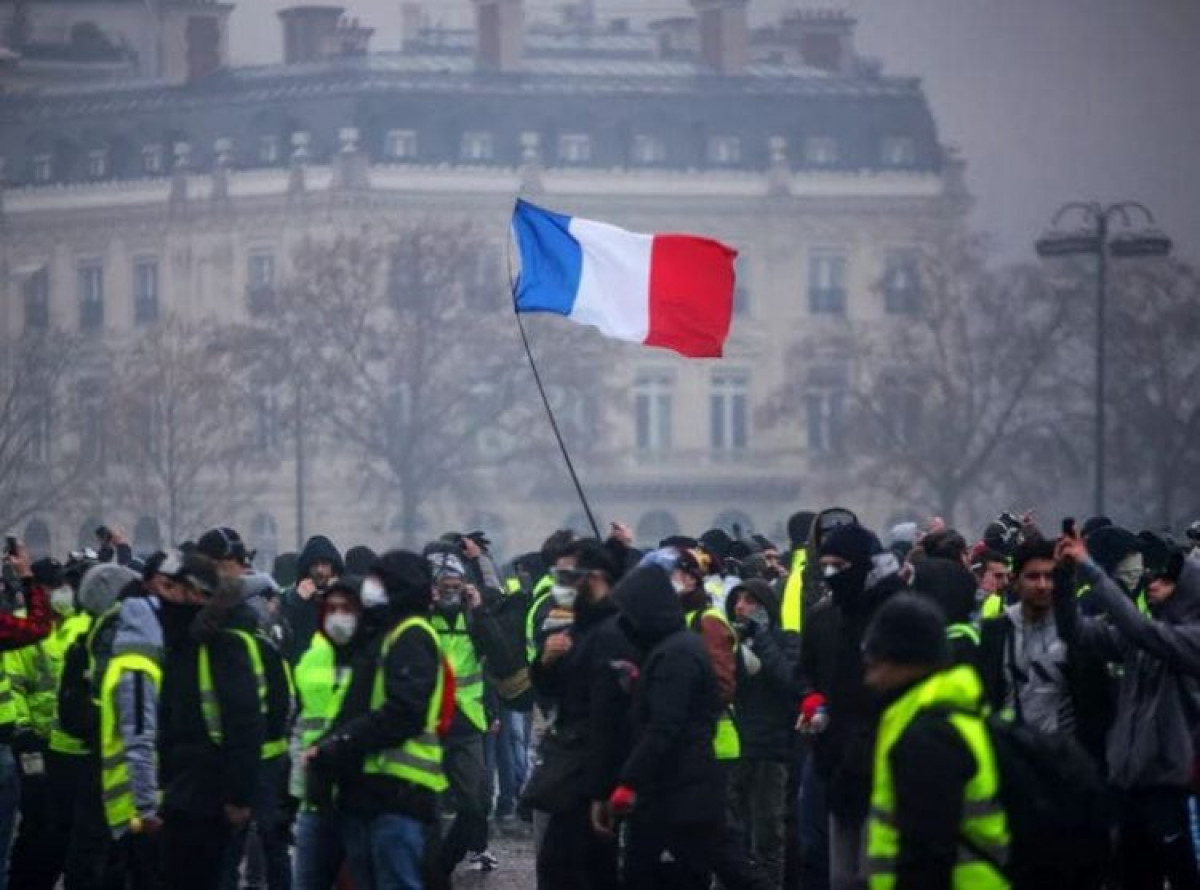 122
122
Hundreds of thousands of people gathered in Paris on November 20 to commemorate the third anniversary of the Yellow Vest movement in France. Angry protesters clashed with French police in Paris’s 12th arrondissement. At least two individuals were injured as police used tear gas and batons to disperse the protesters. The march was marred by fierce confrontations between police and protesters, which included yellow vest campaigners, opponents of President Macron’s policies addressing the COVID-19 restrictions, and a group of black-clad protestors. Protesters slammed the French government’s proposed COVID certificate (also known as Passe Sanitaire) law, as well as the government’s approach to the outbreak, which included requiring newborns to be vaccinated. According to the regulation, a Passe Sanitaire is required to access public establishments such as restaurants and theatres. In the meanwhile, the French parliament has adopted the government’s “anti-sabotage” bill, which aims to rein in political opponents. During the event, yellow vest activists claimed that the measure was passed in the spirit of Macron’s dictatorship, urging the president to step down. On November 17, 2018, the first yellow vest protest took place in response to an increase in taxes on petroleum products and a surge in the price of gasoline. Protesters blocked important highways throughout France. For several weeks, the French middle class’s spontaneous anti-government march was repeated every Saturday. President Emmanuel Macron announced that minimum wages will rise, but pensioners’ tax income would remain fixed in an effort to soothe public resentment. Despite these conciliatory gestures, the protestors persevered in their demonstrations, demanding Macron’s resignation, and thus the Yellow Vest movement and demonstrations have persisted in varying degrees of vigour since then. The deep roots of the social and economic challenges that sparked the Yellow Vest movement have given it special and unique qualities, even if France is a revolutionary country by nature. The following are the most important aspects of the Yellow Vest movement:
1. In most countries, social and economic begin in cities and major areas, then extend to the suburbs if successful. The French Yellow Vests, on the other hand, started their protests in the outskirts, or “banlieues”, and finally advanced into the city centre, where they organised large rallies. Changes in French society as a result of neoliberal economic policies in conjunction with the European Union’s austerity measures must also be considered; the government’s economic policies have caused a rise in the cost of living in cities like Paris, prompting a large number of inhabitants to escape to the countryside, who are, of course, opposed to the government’s unjust financial policies.
2. The Yellow Vest movement was unable to benefit from any leadership or centrality at both its origin and active phases. The crux of the problem is broad public scepticism of politicians and political organisations like parties. The distrust that has built up over three decades of political parties’ disinterest or incapacity in addressing a substantial part of the French people’s economic concerns. On one side, any compromise is complicated by a lack of genuine and meaningful dialogue between protestors and the French administration.
3. The third quality of the French yellow vest movement, as well as the reason for its survival and persistence over the previous three years, is its ideological dynamism.
This part of the movement is the most important since it has the ability to unite many diverse aspects of the French people, including farmers, workers, and employees.
The yellow vest movement, in essence, represents France’s poor and middle classes denouncing President Emmanuel Macron’s economic and tax policies, as well as the country’s widening socioeconomic divisions.
This movement has had a wide range of political, economic, social, and security ramifications for France, including a 10% drop in tourist visits, increased police aggression, and a general increase in demand for a true democracy, all of which could affect the next French presidential election.
Comment
Post a comment for this article